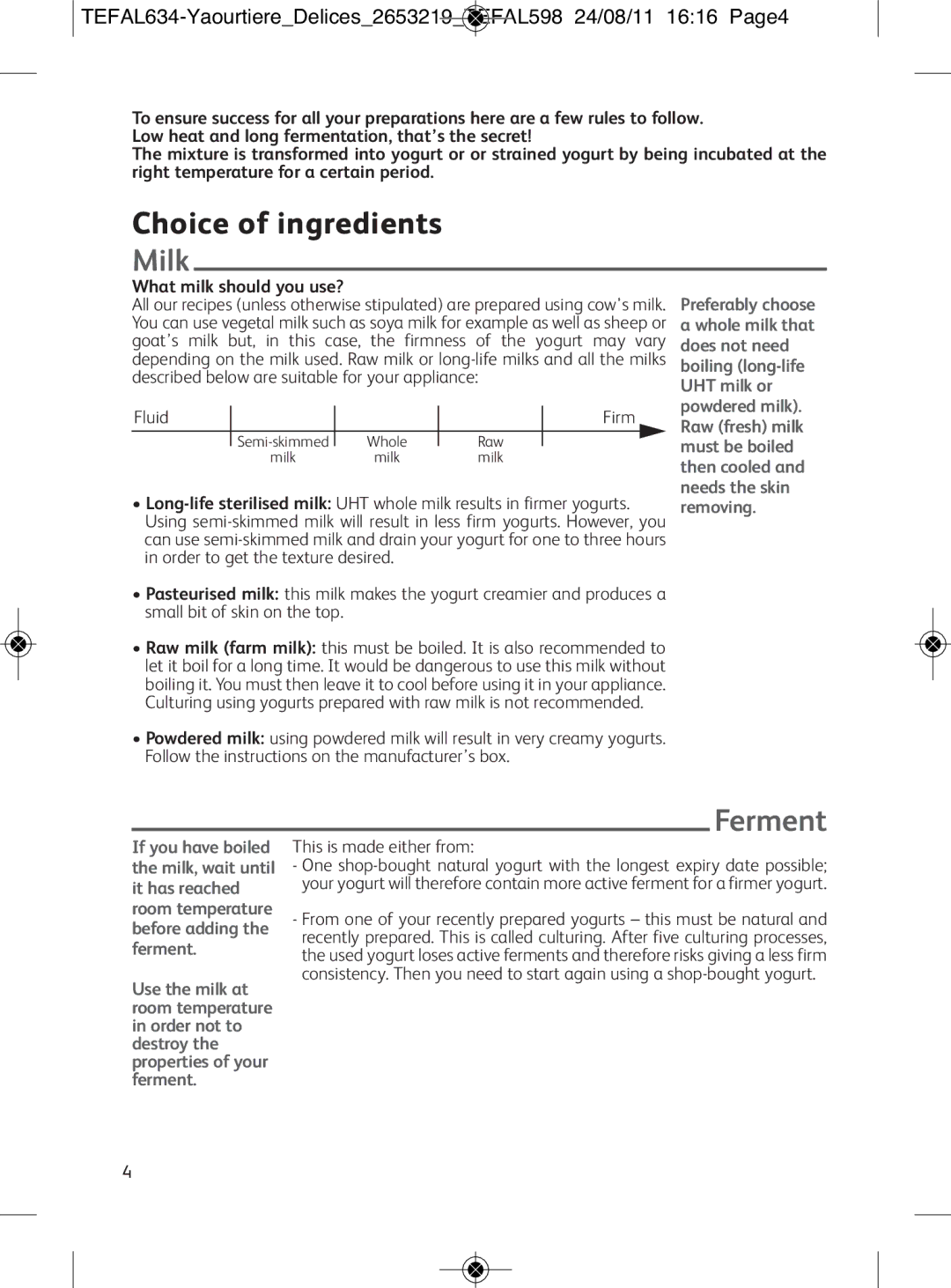
To ensure success for all your preparations here are a few rules to follow. Low heat and long fermentation, that’s the secret!
The mixture is transformed into yogurt or or strained yogurt by being incubated at the right temperature for a certain period.
Choice of ingredients
Milk
What milk should you use? |
|
|
|
|
|
|
| ||||
All our recipes (unless otherwise stipulated) are prepared using cow's milk. | Preferably choose | ||||||||||
You can use vegetal milk such as soya milk for example as well as sheep or | a whole milk that | ||||||||||
goat’s milk but, in this case, the firmness of the yogurt may vary | does not need | ||||||||||
depending on the milk used. Raw milk or | boiling | ||||||||||
described below are suitable for your appliance: | UHT milk or | ||||||||||
|
|
|
|
|
|
|
|
|
|
| |
Fluid |
|
|
|
|
|
|
|
| Firm | powdered milk). | |
|
|
|
|
|
|
|
| ||||
|
|
|
|
|
|
|
| Raw (fresh) milk | |||
|
|
|
|
|
|
|
|
|
|
| |
|
|
|
| Whole |
| Raw |
|
|
| ||
|
|
|
|
|
|
| must be boiled | ||||
|
|
|
|
| |||||||
|
| milk | milk |
| milk | then cooled and | |||||
|
|
|
|
|
|
|
|
|
|
| |
• | needs the skin | ||||||||||
removing. | |||||||||||
Using
•Pasteurised milk: this milk makes the yogurt creamier and produces a small bit of skin on the top.
•Raw milk (farm milk): this must be boiled. It is also recommended to let it boil for a long time. It would be dangerous to use this milk without boiling it. You must then leave it to cool before using it in your appliance. Culturing using yogurts prepared with raw milk is not recommended.
•Powdered milk: using powdered milk will result in very creamy yogurts. Follow the instructions on the manufacturer’s box.
Ferment
If you have boiled the milk, wait until it has reached room temperature before adding the ferment.
Use the milk at room temperature in order not to destroy the properties of your ferment.
This is made either from:
-One
-From one of your recently prepared yogurts – this must be natural and recently prepared. This is called culturing. After five culturing processes, the used yogurt loses active ferments and therefore risks giving a less firm consistency. Then you need to start again using a
4
